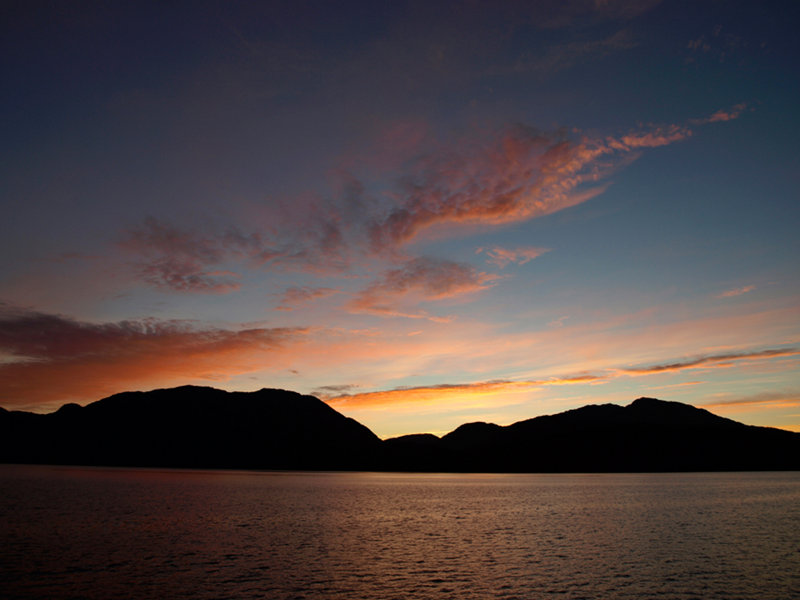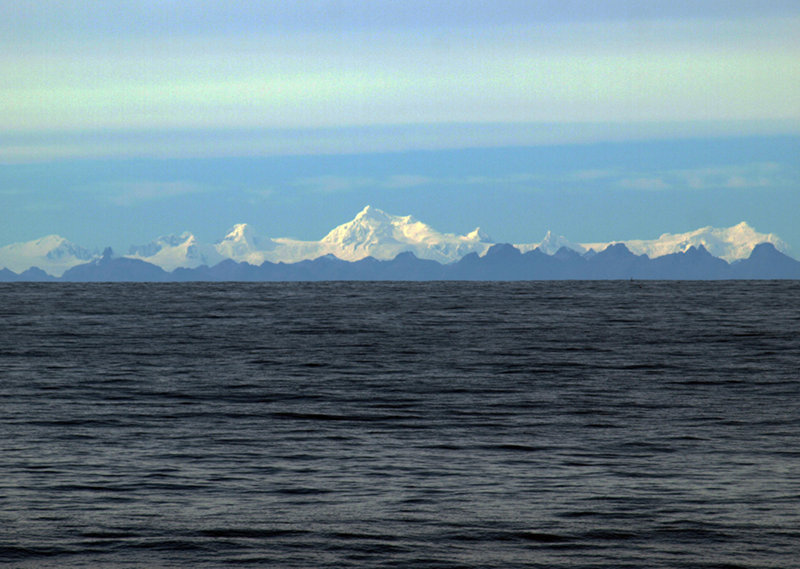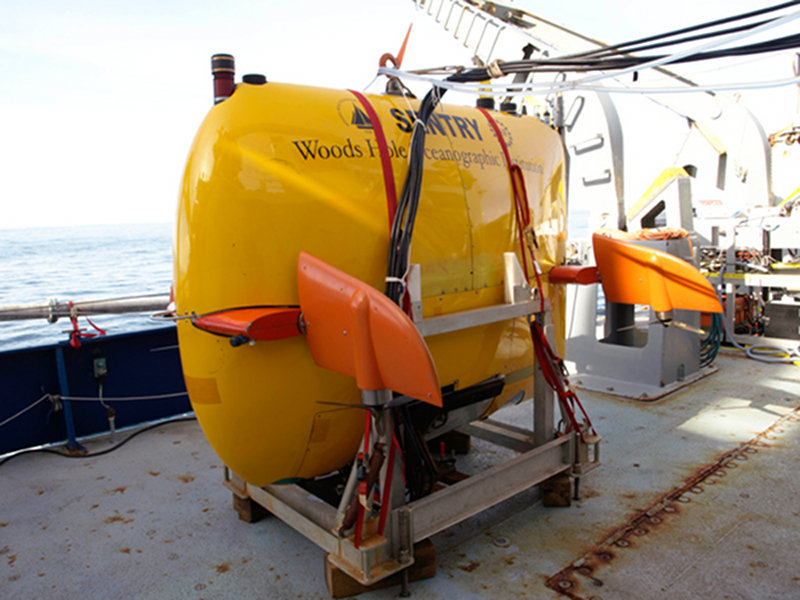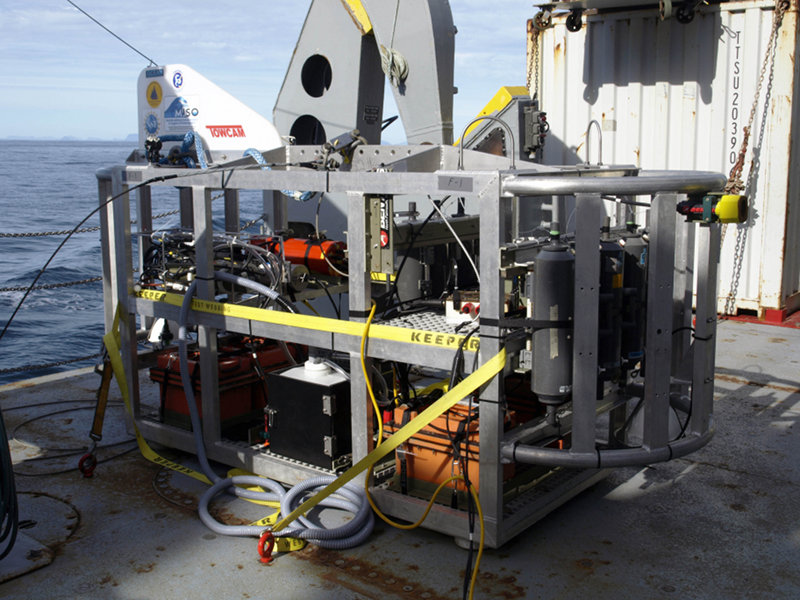
By Chris German, Woods Hole Oceanographic Institution
April 22, 2012

More impressive than yesterday, we awoke to a beautiful dawn and clear skies overhead. Actually, watches started just after midnight last night so, in fact, some folks got to see dawn just before they went to bed. Image courtesy of Chris German, INSPIRE: Chile Margin 2012 Expedition, NOAA-OER. Download larger version (jpg, 2.4 MB).
Yesterday was a good day for the Sentry and TowCam engineers – they were working hard all day taking care of any final glitches; by the end of the evening, both teams were able to report that they would be ready to go as soon as we arrive on station later today. Overnight, we changed our clocks aboard ship so that we are now four hours behind Greenwich Mean Time (GMT) which, by convention, is the time zone in which all scientific measurements are recorded at sea. Since our scientists are all working in four-hour watches, as do all the ship's crew, a simple four-hour offset between time aboard ship and time on all our instruments makes things surprisingly easier when it comes to doing mental arithmetic converting between the two, once the scientific operations stage of the cruise is underway; that is when brain cells are in maximum demand.
In the meantime, what it meant for us immediately was that there was light outside on deck before 9 am for the first time since we arrived in Punta Arenas, early the week before. By mid-morning, we were clear of the inland passage we followed all yesterday and out into open water, where there were sightings of numerous whales spouting in the distance and, later, whales chasing sea lions closer to the ship. Sadly, I missed all but the spouting.

By early afternoon we were way off-shore and out in the open Pacific Ocean, proper. While the mountains in this photo are impressive, what is particularly good news for us on the ship is how flat and calm the seas are. Image courtesy of Chris German, INSPIRE: Chile Margin 2012 Expedition, NOAA-OER. Download larger version (jpg, 3.8 MB).
Instead, I have been spending the time, thus far, planning what order to do things with Sentry when we arrive (our first priority), and then organizing the start and end point of the first CTD tow-yo, which we hope to commence as soon as Sentry is in the water and safely on its way. If all goes to plan, then by late tomorrow morning, we should have made huge progress to tracking one (or more?) vent sites down at the Chile Triple Junction. Sentry will have used its sidescan sonar to collect the equivalent of aerial photography across the whole area where we saw strongest chemical anomalies in 2010, indicative of venting. We will also have tow-yo'ed our CTD package through the water column, right down the middle of the Sentry survey area and passing through all the locations where we saw strongest methane enrichments in 2010, to connect the dots between those key points using in situ sensing - and collecting more samples, of course, to compare and contrast the chemical concentrations.

Here is Sentry all buttoned up with its outer shiny yellow skins covering over all the complex components hidden within. Image courtesy of Chris German, INSPIRE: Chile Margin 2012 Expedition, NOAA-OER. Download larger version (jpg, 2.3 MB).

TowCam is all rigged up and ready to go, too. Hopefully after that,the CTD tow-yo and Sentry surveys have given Tim and the TowCam team some key hints on where will be best to go explore. Image courtesy of Chris German, INSPIRE: Chile Margin 2012 Expedition, NOAA-OER. Download larger version (jpg, 2.6 MB).
But for now, with about six hours to go until we arrive on station tonight (about 8 pm local time, or midnight GMT), everyone is just going through some final checks—on the vehicles, on their lab instrumentation, and even on the logic of what we’re going to do (and in what order) so there are no last-minute surprises. And then, all too soon, it will be showtime and we'll be working through the night. Who knows what tomorrow will bring...